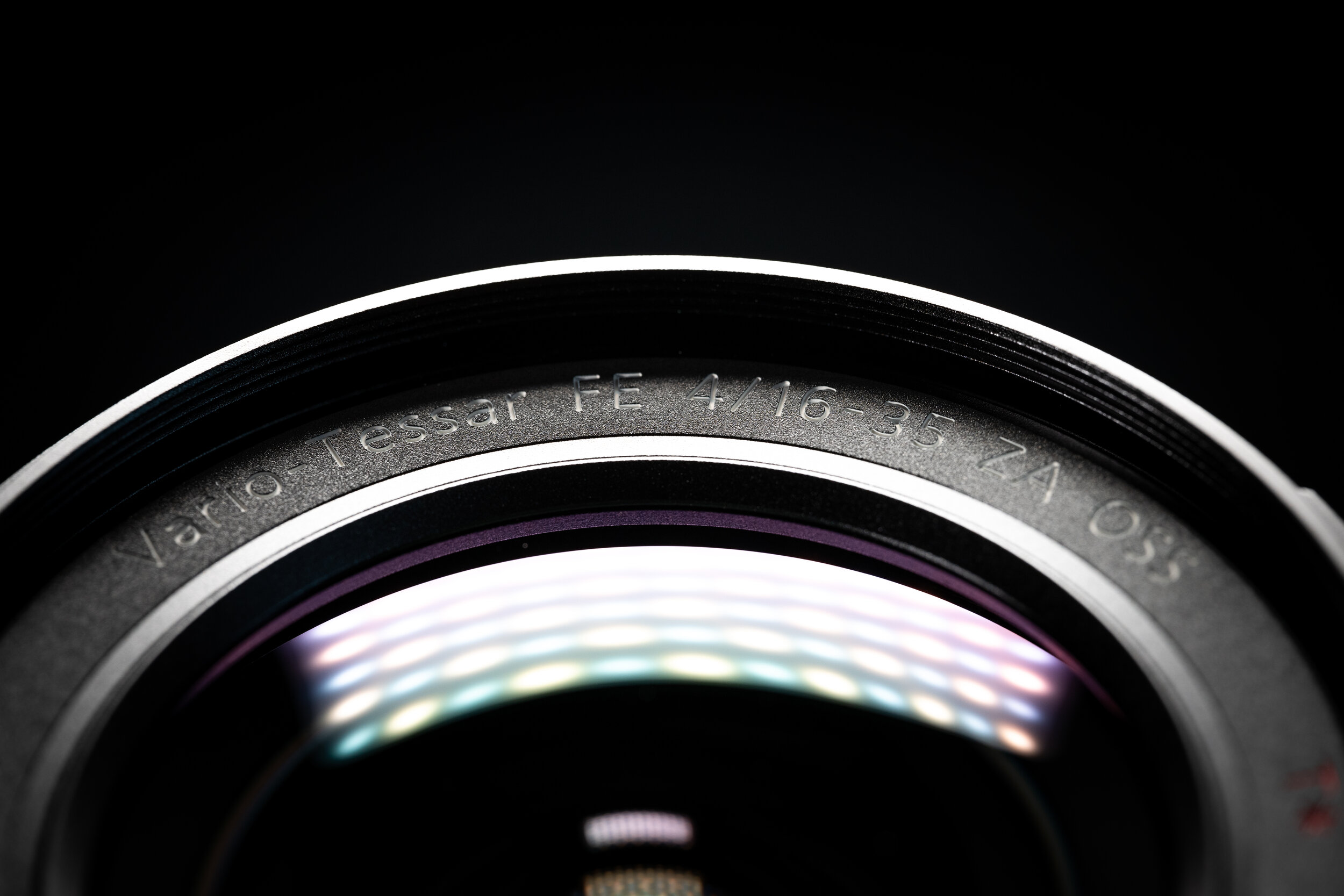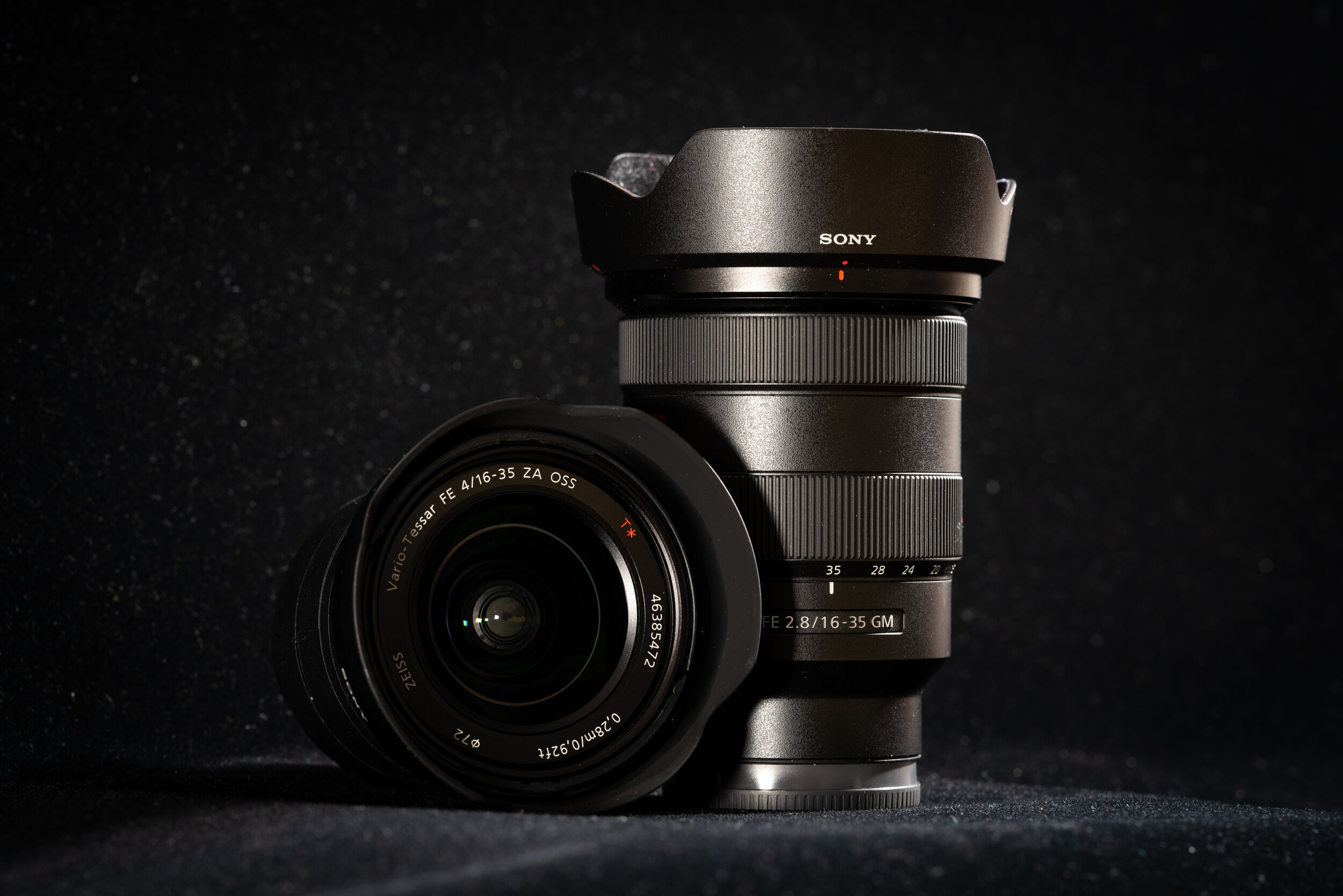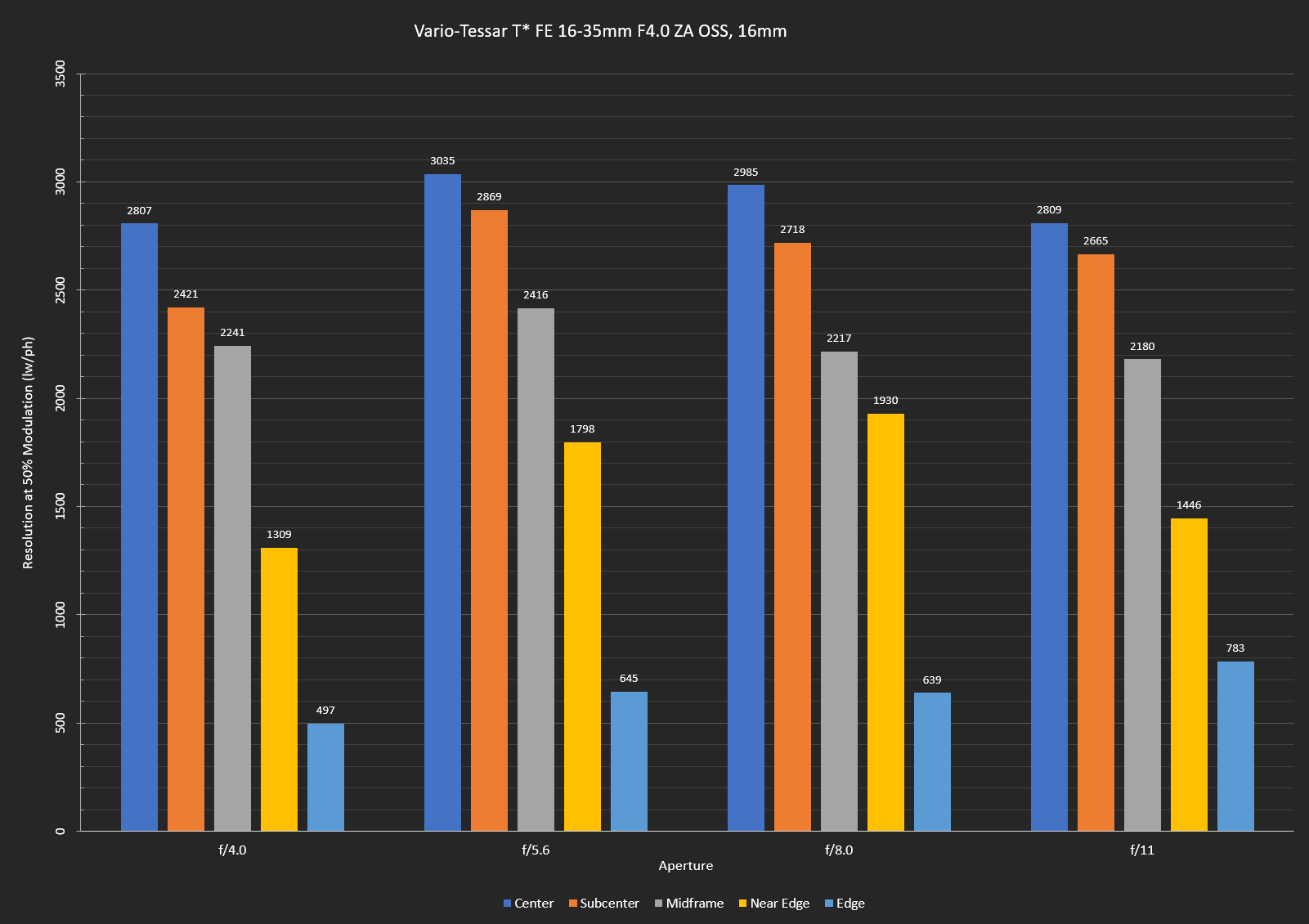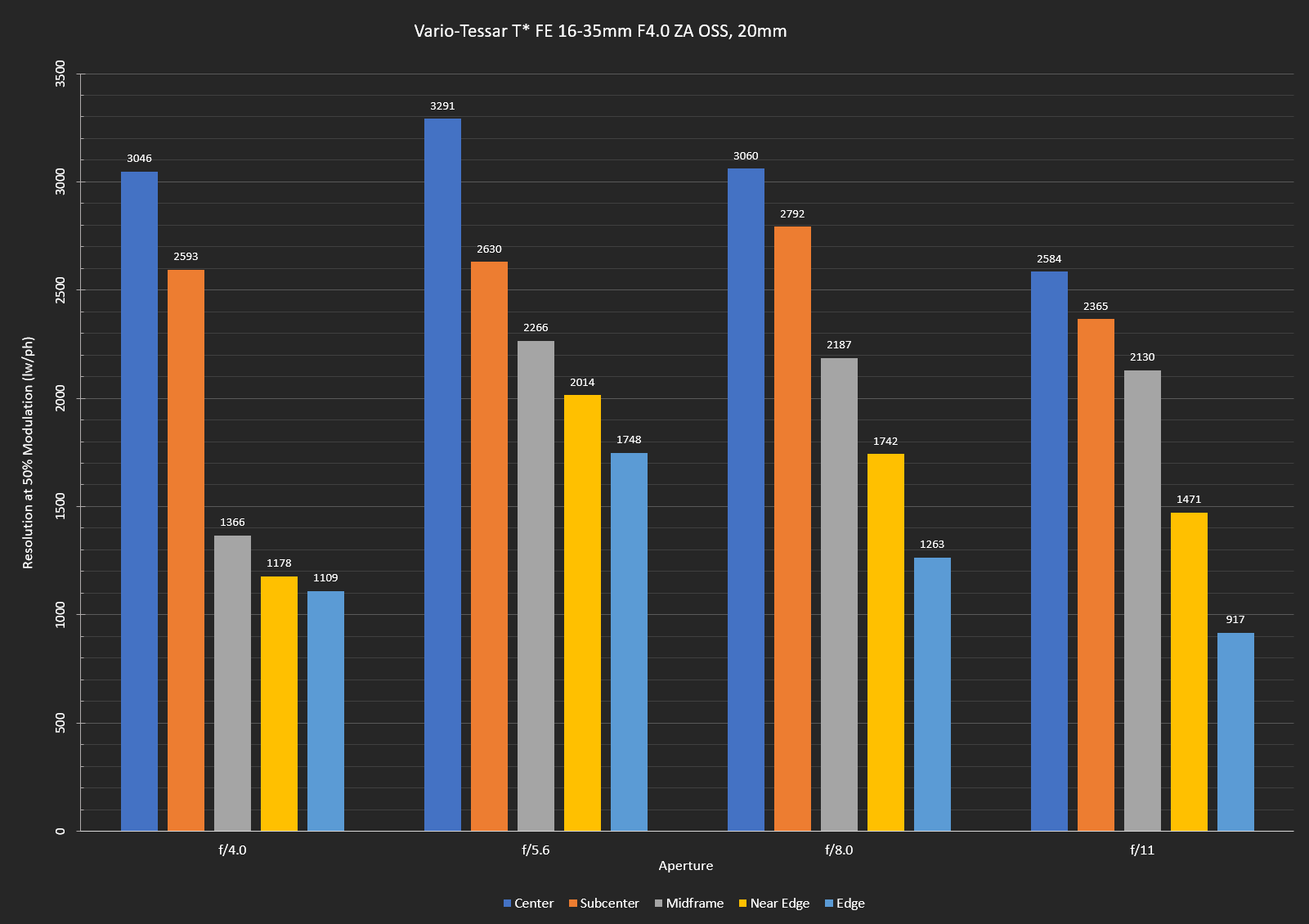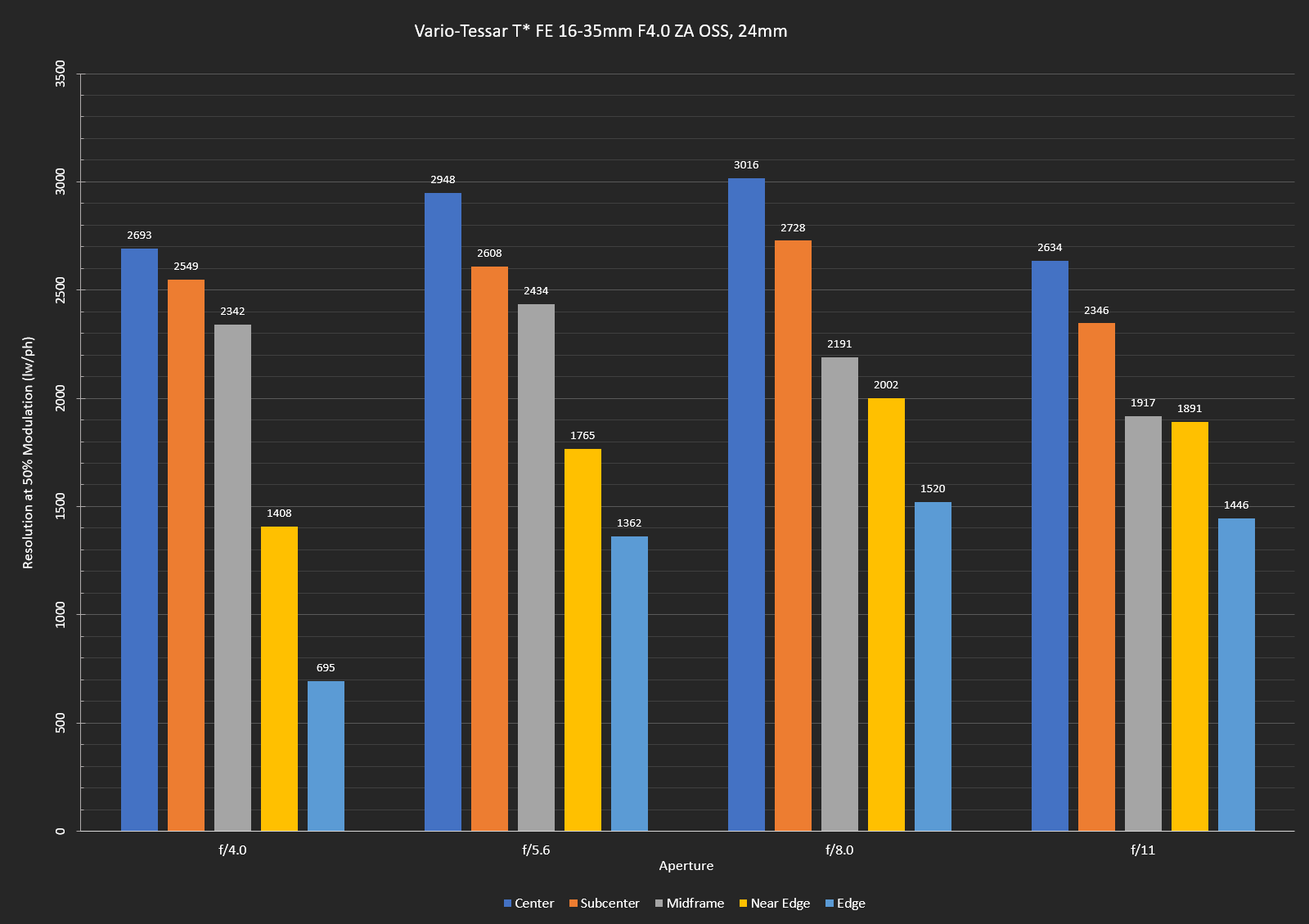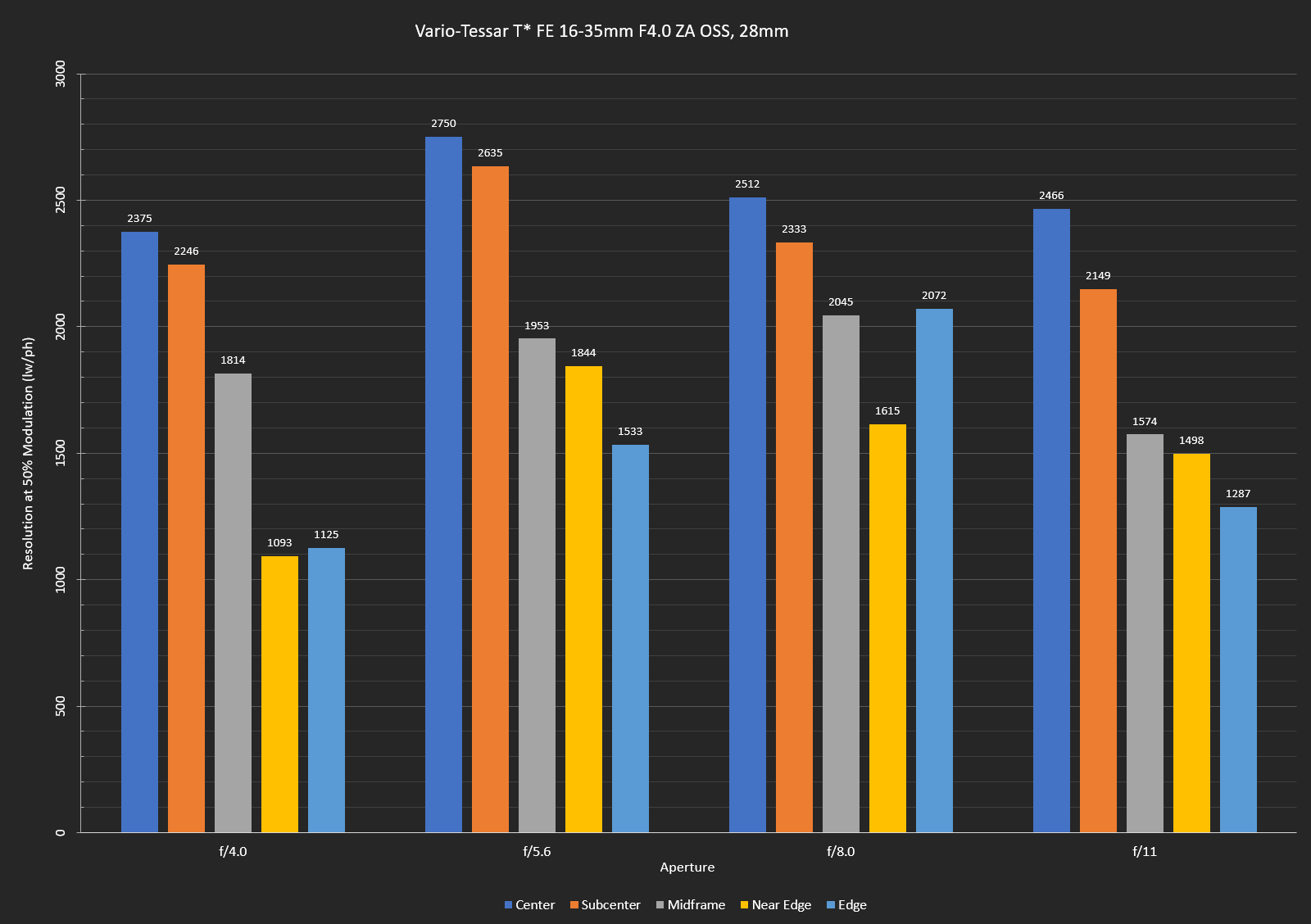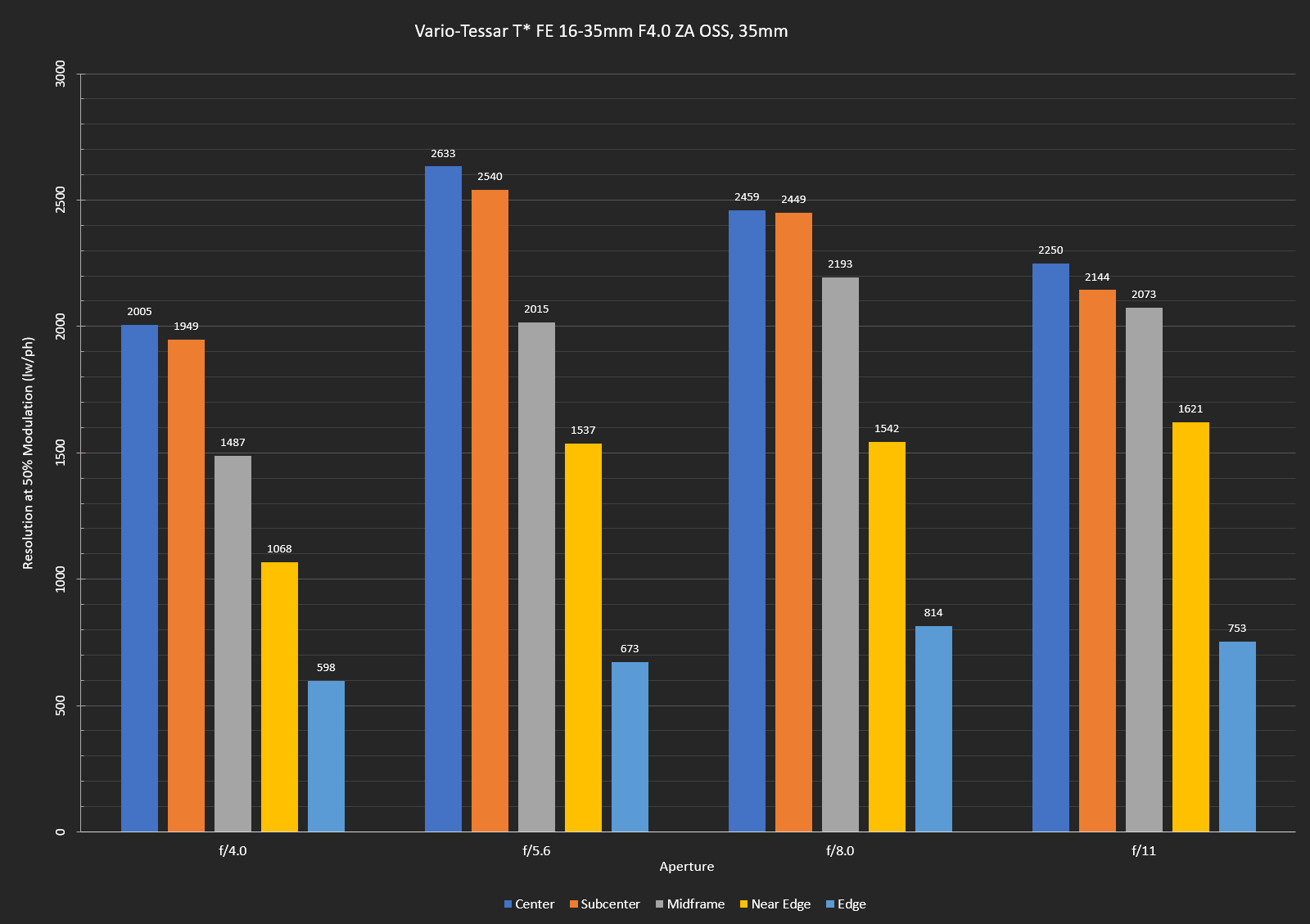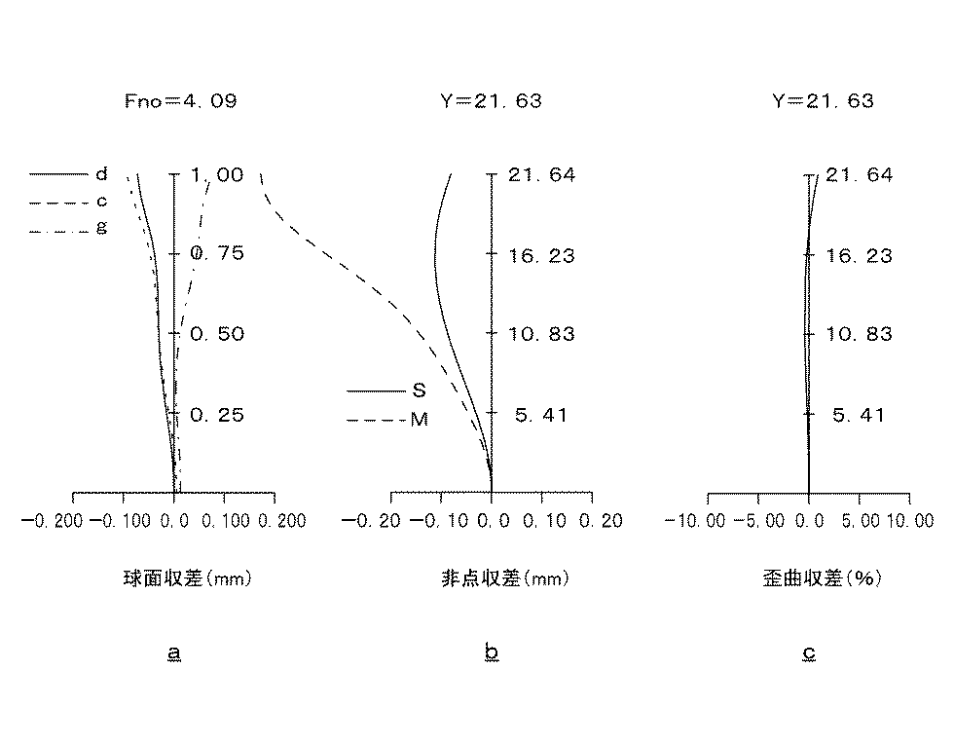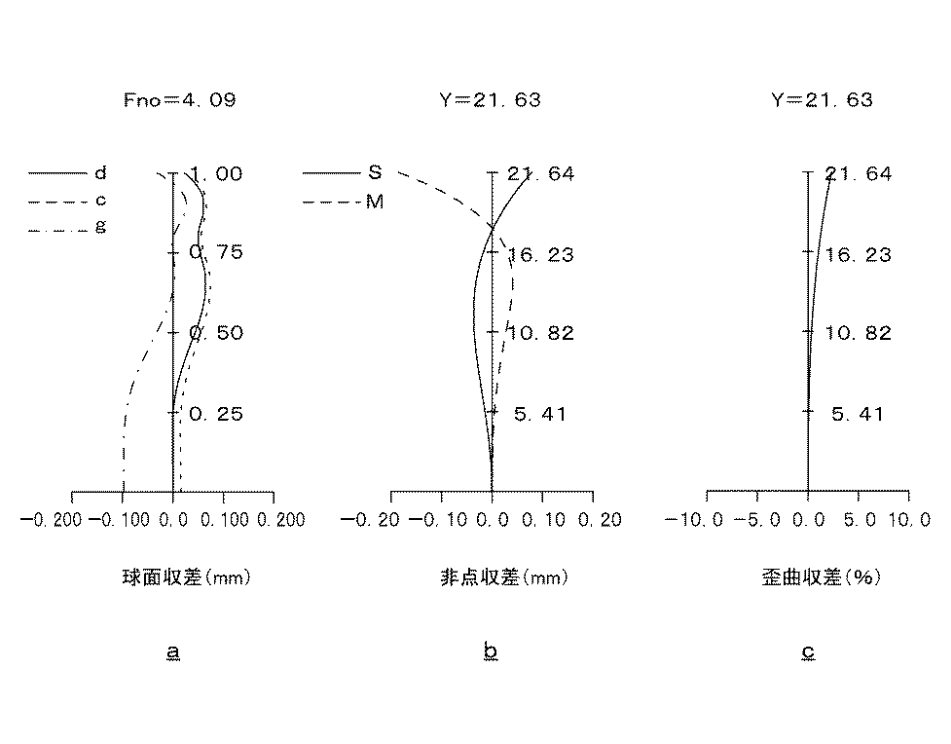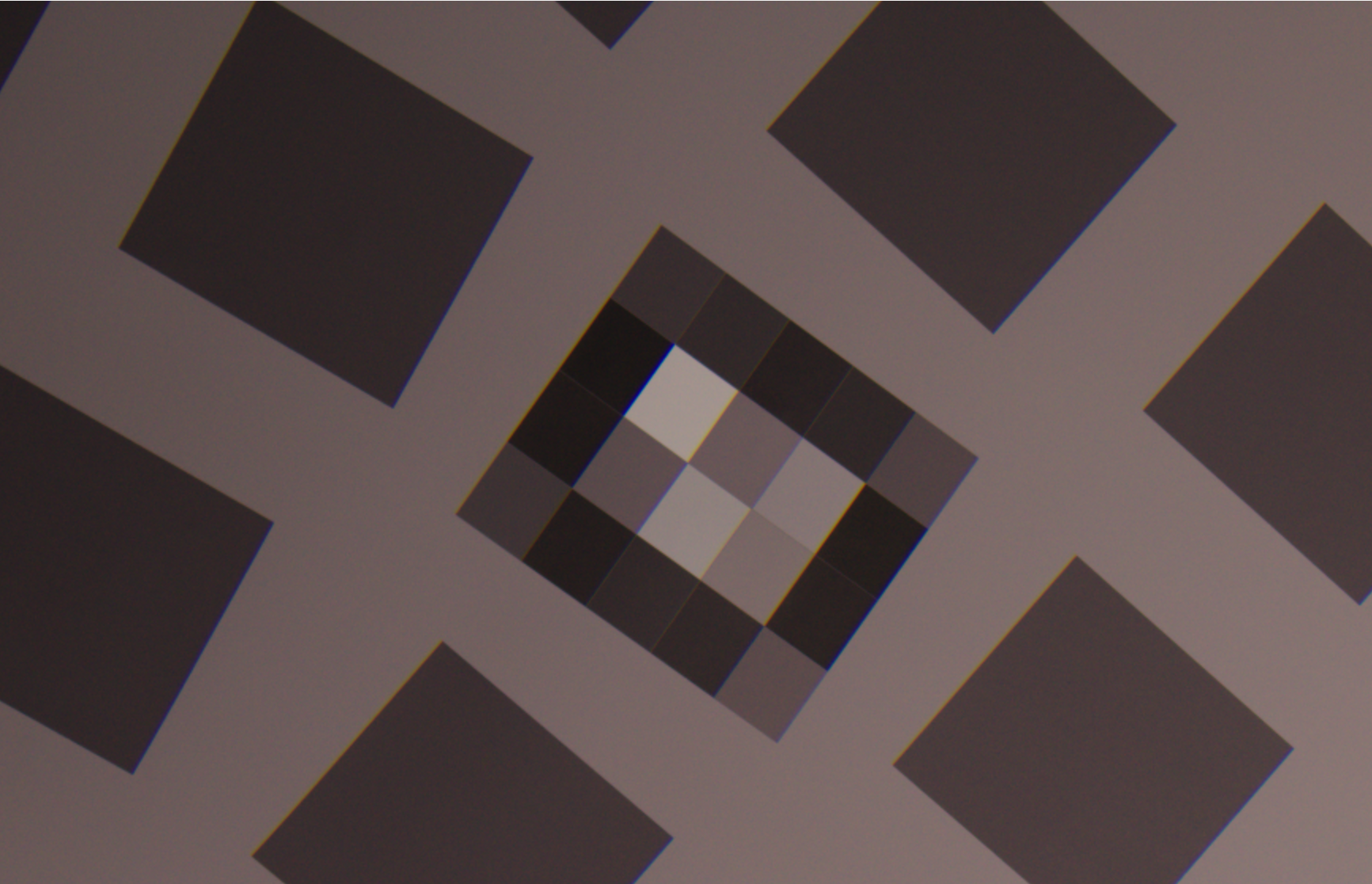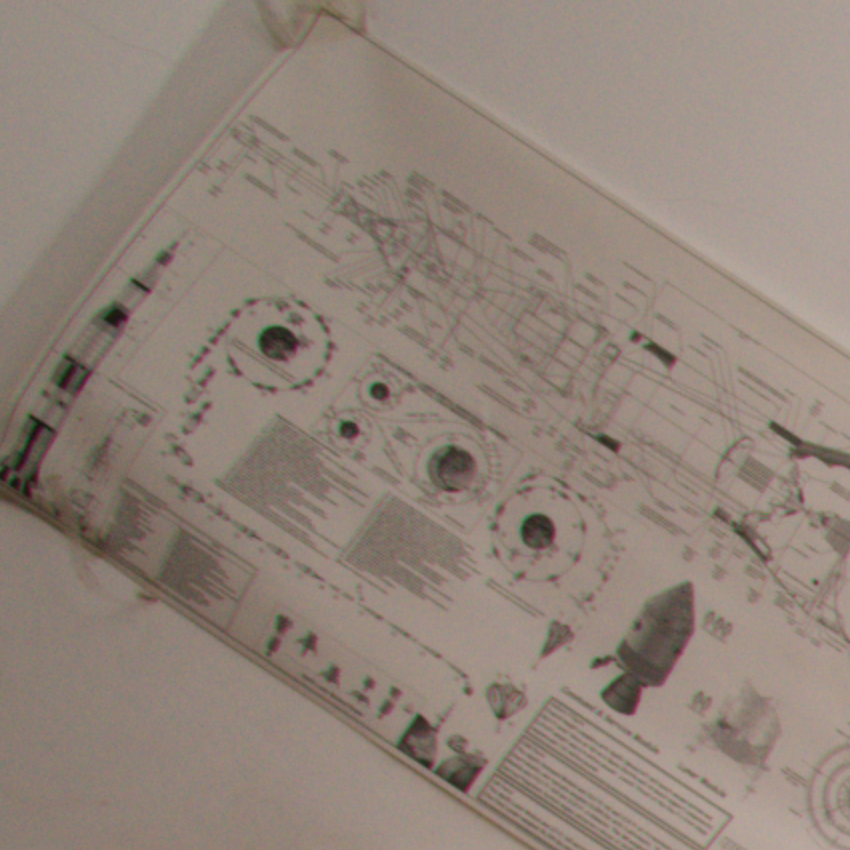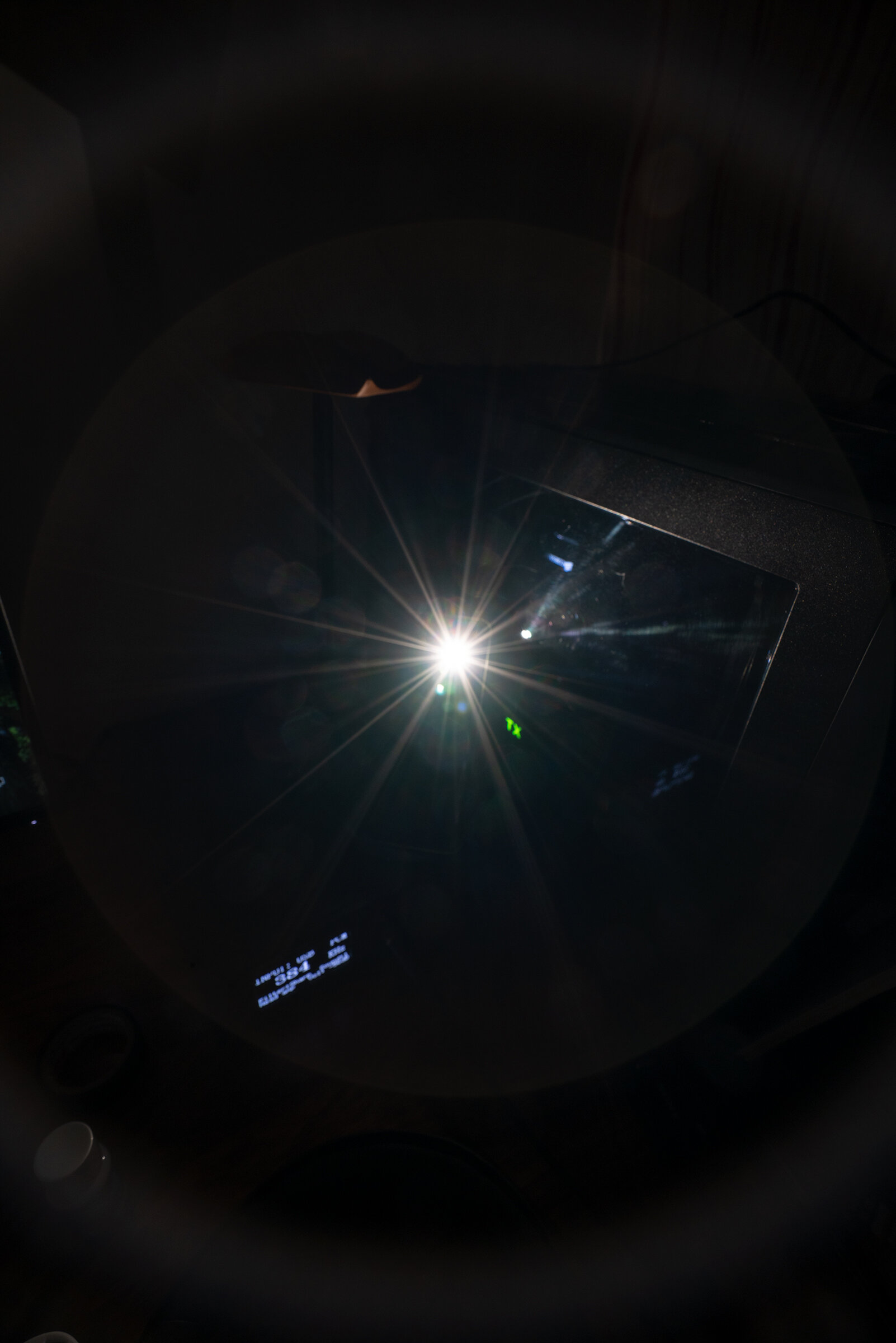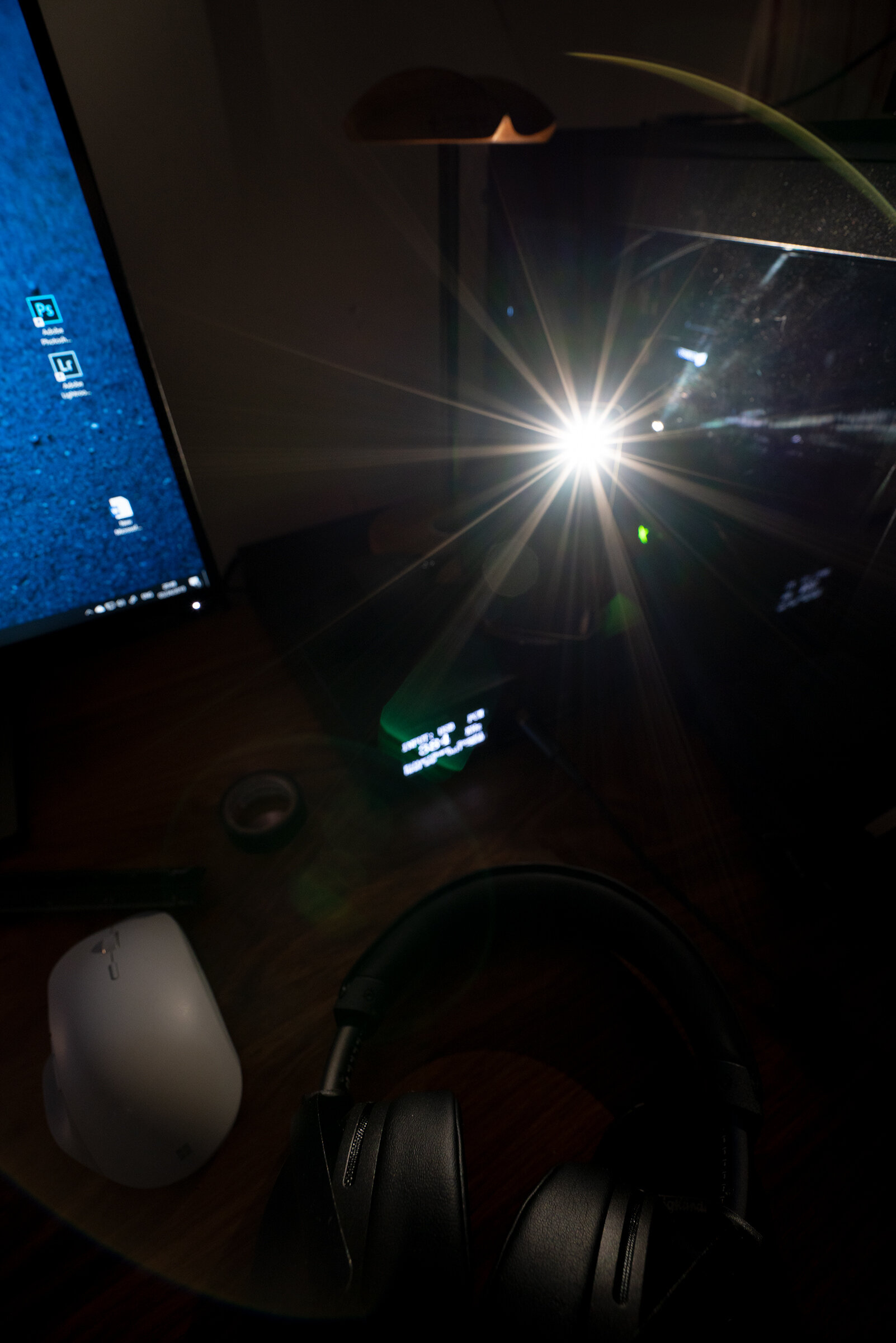LAB ONLY: Vario-Tessar T* FE 16-35mm F4 ZA OSS
“THE BUCKET ‘O ABERRATIONS”
Forewords
The FE ecosystem practically did not any native wide-angle offers until late 2014, when the Vario-Tessar T* FE 16-35mm F4 ZA OSS was released, which stood as the one and only placeholder until the GM was released three years later.
Now it has been five years since the release of the lens, with a number of quite mixed opinions surrounding it. It was praised for its reasonable portability, and disregarded by many for its price tag and optical quality. People, like they always do, are never settled. While I do not aim to settle them by any means, but to provide some hopefully technical performance details about this piece of glass.
The design of this particular lens can be found in patent JP2015166834A/US9817218B2, with the fifth embodiment being the closest to the production variant.
The lens contained 5 aspherical elements, with 3 of them being double-sided, L11, L31 and L44. L11, the foremost element, is identified by Sony as “Advanced Asphere”. I don’t see anything special besides the size of it, and it is supposed to be a molded asphere as indicated in the patent. 3 ED elements are identified by Sony, with one Fluoride glass element (L31) unidentified in the product page, likely due to the fact that its dispersion properties are weak compared to the three other ones. It totals up to 12 elements in 12 groups, a very frugal design.
Its true specs are 16.48-33.95mm f/4.13, deviation from the marked specs are within the acceptable range.
Though advertised so, this lens bodes little of “Tessar,” nor does it look similar to a retrofocal Sonnar structure present on many wide primes. It is simply a Vario-Distagon design, with a negative-positive-negative arrangement. The negative front moves towards the object, and the rear groups move towards the image side, collecting wider incident rays from the front elements and moving the exit pupil towards the image. It is a common design found on practically all modern ultra-wide zooms, and I don’t feel like spending too many words on this subject.
The single positive element before the aperture, L21, acts as the optical stabilizer. Also another common design. GR3, or L31 is the sole lens responsible for focusing. It is driven with a single electromagnetic linear motor, and the focusing is quick and quiet thanks to its small size. This element is crafted out of Fluoride glass, with both sides being grinded aspheres, aimed to reduce chromatic, spherical aberration and field curvature during focus movements. That’s some really expensive manufacturing processes going into making of that single glass, especially as Fluoride glasses are brittle and thus difficult to work on. As pointed out by Roger Cicala, this LM holds onto its payload with a clip, and is likely more durable than the glued-on variant found on the Vario-Tessar T* FE 24-70mm F4 ZA OSS or the Sonnar T* FE 55mm F1.8 ZA.
To conserve cost and size, the 16-35mm used many high-index heavy Lanthanide flints, such as TaFD5 from Hoya, to quickly collect and reduce the axial heights of incident rays. For that matter, 3 out of the 4 front elements are made from this type of material. This way, smaller rear elements can be used, reducing material and processing cost during manufacturing. The issue, is equally as prominent. It brings a strong tendency to display higher-order astigmatism and spherochromatism, something that is very evident on this lens.
All 3 ED elements in the lens are FCD1. While being a fairly common material, its anomalous dispersion properties are nevertheless fairly decent. But likely for a lack of good matching with proper AD flints, heavy lateral CA can be quite readily observed. Good lens designs usually match Fluoride crowns, having AD properties in the short wavelength range, with typically Niobide flints with AD properties in the longer wavelengths to suppress CA. That is not present on the 16-35mm. The only piece of fint having any sort of anomalous dispersion at all is the L22 element, made out of NBF1, but is still lacking compared to higher-end materials like the S-NBH51.
An interesting thing came to my notice was that, in E 10-18mm F4 OSS, the exact same FCD1 material was advertised as “Super-ED”, which it is really not. I wondered what went through Sony’s minds between the making of these two products.
The third aspheric surface, the inner side of L12, is a hybrid asphere made out of molded resin attached to an ordinary spherical glass. Not something worth praising, but is generally considered acceptable for this range of lower-end consumer lenses.
Disclaimer: this particular copy of then lens was lend to me by a friend for reviewing purposes only. This review, or myself, was not affiliated with Sony or its respective distributors. Only one copy was tested.
exterior and handling
People are right, for its portability. It is quite a reasonably sized lens, and is very light indeed.
The only issue was that, four years later, the GM appeared in a very similarly sized package, and weighs only a little more, while offering dramatically better performance, perhaps some of the best-in-class.
The exterior of the 16-35mm is very similar to the Vario-Tessar T* FE 24-70mm F4 ZA OSS, constructed with polycarbonate skeleton and a thin sheet of Aluminum on the outside. Despite the fact that there are some exposed metal, the lens still felt cheap. The shell felt very thin and the finish is plasticky to touch, while the low density offered no help in the right direction. Given that it's a thin sheet, it is also prone to scratch and dent easily. The knurled ribs are also thin like the rest of the lens, and felt unsubstantial. Both rings’ resistances are too light for my taste, but handling did not present any issues, per se.
Otherwise build quality is acceptable, I see no uneven gaps or untapered edges. Focus and zoom rings are tight with no play. Weather sealing seemed to be present but meager. I would not push this lens to the elements. A side benefit, from using heavy Lanthanum flints as front and rear elements, is that they have extremely high hardness, making this lens useable without a protective or UV filter, and should give you extra confidence when changing lenses in the field.
For the fact that I was lent this lens for a relatively short amount of time, and for its lackluster optical quality, I really had little incentive to bring it out of the lab and do sample shots.
Therefore this review will be limited to technical data, please bear with me here.
Lab test data
The lenses are tested against an Imatest SFRplus 5×7 chart at a distance of approximately 5m.
Each point, as shown in the right image, is tested in both directions (radial and sagittal, except for image center), for three times and the values are averaged to make the final data. Any far-laying outliers are discarded. At least two corners (rotations) are sampled.
The test points are not equidistant for the fact that different parts of an image are created equal, but some parts, like the center, are more equal than the rest. Furthermore, the near edge and extreme edge only occupy a small portion of the image (in terms of area). The midframe mark corresponds with the rule-of-thirds grid, as it’s used often enough in composition to put a subject there. The numbers in millimeters denotes distance from image field center.
Samples are tested with a 42.4MP IMX251 sensor, with a reliable sampling rate at 2652lw/ph. Higher or lower resolution sensors would likely see somewhat different numbers, but not dramatically.
All sharpening, embedded profiles, etc., are bypassed.
Center resolution was excellent across the zoom range. And it should be. Wide angles have the natural benefit of having a smaller magnification ratio at infinity, meaning that more information is gathered at the center, thus greater resolution. Optimal aperture seemed to be f/5.6 across the zoom range.
We see the peak resolution of this lens at 20mm f/5.6, as the center peaked through 3300lw/ph at MTF50. That is beyond the Nyquist frequency of the sensor, and calculation from the patent showed it should be capable of resolving somewhere around 4000lw/ph right at the center. MTF30, as tested on the 42.4MP IMX251, showed to be 5102lw/ph. A higher resolution sensor should yield better high-frequency results, but not much more.
The edges though, are a completely different story. The near-edges and extreme edges never became “acceptable” for my standards, with little to no improvements over aperture changes. 16mm and 24mm suffered the least from the degradation, image quality within the midframe bound gets usable upon stopping down, but edges are always bad like the rest.
On the right are two figures found in the patent depicting aberrations (A: spherical and spherochromatism; B: field deviation, C: distortion. Top image is 24mm, bottom is 33.95mm). This is among some of the worst astigmatism I’ve ever seen. They didn’t even tried to hide it, heck, they never had to release the patent anyways. Most lenses have a total field curvature within ±0.15mm relative to the Gaussian plane; while good lenses designs (cheap or expensive) usually have the meridional and sagittal field sticking fairly close together, hence displaying little amount of astigmatism.
I tried to measure astigmatism (read: meridional and sagittal resolution differences), but the heavy amount of lateral CA has made that impossible. I could not isolate the focal differences apart from the chromatic aberration. In practice, the meridional resolution, where the LaCA resides, is actually worse than sagittal, where the field curvature is the furthest from the imaging plane. There is such a remarkable amount of LaCA that the impact of astigmatism is actually washed out by it.
I simply found the sheer amount of it appearing on a modern lens like this, is simply beyond comprehension. They are literally flooding everywhere.
And I really mean it by saying “flooding everywhere.” Anything outside the center square of the rule-of-thirds grid degrades rapidly into a smeary mess. Unfortunately that seemed to be the case for all focal lengths, with 24mm and 28mm being the slightly less affected, but nowhere near what I would consider acceptable. Worst of all, it does not improve with stopping down. However much of it you can find at f/4.0, it remains at f/11 and beyond.
The LaCA at its worst, at 16mm f/4.0 edges, made out to be at least 34μm wide to me.
It’s quite likely LaCA is actually worse. In any way, it’s definitely will not be better than the above value.
Photoshop, Lightroom, Capture One and many other editors will force on the embedded profile for you, that turns the colorful edges into desaturated gray blur. Bypass the profile with RawDigger or dcraw in post, or zoom in in manual focus sessions will help the lens display its true quality. The profiles on the other hand, certainly makes the image look somewhat better, but it does not help recovering any resolution.
The good resolution, once lost, is lost forever.
Bokeh and Color Renditions
Bokeh quality is mediocre. But I could not imagine anyone using this lens for any amount of bokeh anyways.
Onion rings are quite pronounced, and there are a lot of outlinings around the balls. They do not appear to be perfectly round even at the center, likely due to some sort of aperture assembly defects, a common phenomena to earlier E Mount lenses, as well as the RX1 series. Cat-eye is not visible near the edges.
LoCA fringing is visible, but minimal.
It’s not good bokeh, but should not impact shooting too much.
A major harm of high-index glasses is that they eat up shorter wavelength of light. TaFD55 for example, absorbs 75 times as much 450nm blue lights than 700nm reds. Seventy-five. The result is a warmer image with under-represented, unsaturated blues.
In the image below, I’ve contrasted it with the GM and x-rite ColorChecker reference patches. The strips above each square are GM samples, the patches on the side are the reference values.
Both images (ZA and GM) are taken under the same lighting conditions, and are both rectified against Block 22 (Row 4, Column 4, the supposed 50% Density Gray under ideal conditions) for exposure and white balances.
We can see the blues and cyans are severely degraded, both in terms of saturation and hue. Skintones followed similar story, but not as much. They are a bit warmer and greener than the GM or the reference values.
The lack of spectral information will result in difficulties in tuning and post. The colors will appear unpleasing and “dead” no matter how much you yank the HSL sliders, and lacks the more subtle tonal renderings other lenses might offer. This, much like the lack of resolution, is impossible to recover in post.
Gamma or grayscale response seemed fairly similar. In practice, I saw the ZA had more lifted shadows and less defined darker details. Likely due to the same reason, for that high-index glasses are more prone to internal scattering of light than the rest.
Flare, Sunstars and Coma
This lens is not flare resistant. The GM has had a bad name for proning to flares, and the ZA is just worse. The high-index glasses had to take this for credits once again. People familiar with CG rendering or physics at all will know what I’m talking about, higher indices will benefit a material’s properties of bending light, but will make reflectances stronger as well. That’s exactly the reason why glass and metals are shinier than plastics even for the same surface smoothness.
Taking TaFD5, as used in this lens, for example. It has 8.67% reflectance for axial rays and 14.22% for 60° incidences. In comparison, both values are more than twice as much for that of FCD1. That much differences are not something to be easily offsetted by any kind of coating they tried to put on it, and I have every reason to believe this thing definitely did not carry Sony’s best coatings either.
All below images are taken at 16mm f/8.0. Longer ends may experience better performances.
It didn’t even take any trying to provoke any flares, they just came, in avalanches and tsunamis.
The above two images are closer to real-world settings, like what you might encounter in a backlit woods or buildings or something. Only minimal improvements showed over underexposing or recomposition. These are ugly flares too, not like some intentionally left over ones in certain cine lenses. I doubt you would encounter the conditions in the right image in practice, but I did it just for fun.
This is not great performance. Even ignoring the picture on the right.
There are plenties of ghosts, vailing glares, and big ring blobs. And you get two of them! It’s like buy one get one free.
The images were taken at 16mm, cropped from extreme edge.
Coma performance is neither good or bad. Starting at f/4.0, you shouldn’t be expecting any, and that is pretty much the case here. There are only minimal radial coma. Stopping down to f/5.6 provides little improvements, it takes somewhere around f/7.1 to completely eradicate it. I doubt anyone would use this thing for astro. Maybe citiscapes.
Sunstars never get good. Even at f/11, they appear to be uneven and fuzzy.
It’s worth noting that you get some amount of sunstars even when wide open. This is due to the aperture blades never retract fully. That should not be seen as an issue, merely a design choice. This feature is also present on the GM. The benefit is you can get some amount of sunstars even when shooting handheld night shots, with the downside being you may or may not get the roundest bokeh balls, especially if the blades are unevenly installed (which is the case on my copy).
Vignetting and Field Uniformity
Vignetting figures looked normal to me. Wide lenses, especially ones with planar front, do suffer quite a bit from vignetting. It’s a natural consequence with the design, you either get lots of vignetting or lots of square filters to carry.
The edges recovers slightly with stopping down, and the midframes looked always good.
I do not see any colorcast on Mk.2 and Mk.3 bodies. It shouldn’t be a problem for later ones either.
Centering quality is mediocre. At both ends (35mm shown above), the optical center (yellow circle) deviates from the geometrical image center (red square) slightly.
It’s something all zooms do, especially lower end ones. The particular copy I ran into doesn’t not display decentering severe enough that causes worries.
Sony is not a company known for outstanding quality controls, particularly the earlier lenses. My copy certainly does not represent the whole population, YMMV.
The center transmission as tested in 16mm f/4.0, was
T/4.61
Normal performance.
Final Words
Yes, I am aware that people think they have a better copy than mine. They might as well do, and I do not want break their hopes and dreams even if they tried to send me a copy.
I would, personally consider this piece of optics a complete failure.
It was a placeholder, and a placeholder only. It merely filled the missing piece of the FE puzzle in the early years, and now with a wide range of ultra wide zoom and prime selection available, that particular historical mission should be long over.
The older ZA lenses from the A Mount era, though not optically superb, they were literally built like tanks. They had milled steel inners and cast copper shells. They were durable and nice to touch, and were at the very least a joy to operate. Not the case here.
Optically, this really is a vastly overstated and heavily underwhelming lens. It’s, just, not good. LaCA flooded everywhere, even drenching out the high amount of astigmatism. Anything apart from the center is just blurry and swampy. You get all seven optical aberrations in a single package, basically. And the flares too, by far a underwhelming experience.
Marketing and price tag set expectations high for this thing, and really only added onto the overstatement. In late 2019, it’s just not worth it.
Even for the size and weight advantages, you might as well find a wide prime to go with.
Possible Alternatives:
Sony FE 16-35mm F2.8 GM: world class performance in every way, and has only very little weight and size setbacks over the ZA. Pricing is world class too.
Sony FE 12-24mm F4 G: reasonable performance at reasonable price. I would argue that 16mm is plenty wide for most applications. Unlike the Art below, it does not offer any rear-attached filter options, and the bulbous front can potentially decrease durability.
Sigma 14-24mm f/2.8 DG DN Art: less of a performer compared to the GM, but is very similarly priced and sized to the ZA. I see no reason rejecting this lens against the ZA, unless you have a strong objection for the bulbous front.
Tamron 17-28mm F/2.8 Di III RXD: also similarly priced to the ZA, you get a slightly shrunken zoom range in exchange for a f/2.8 max aperture. Both resolving power and flare resistance are vastly superior over the ZA. Portability is similar to the ZA and arguably better than the Art, plus you get the benefit of using screw-in filters.
Laowa 15mm f/2 Zero-D: fully manual but excellent optical performance. Coma isn’t great, but gets usable at around f/2.8. Excellent close-up capabilities as Laowa lenses always do, but I can’t think of many situations this would be needed. No EXIF is available. There has been reports saying it has colorcast.
Zeiss Batis 2.8/18 and 2/25: significantly better color rendition and flare resistance, but resolution is somewhat questionable. Expensive to the point where I wouldn’t consider them justified.
Copyright © Wavechaser 2019-2020
